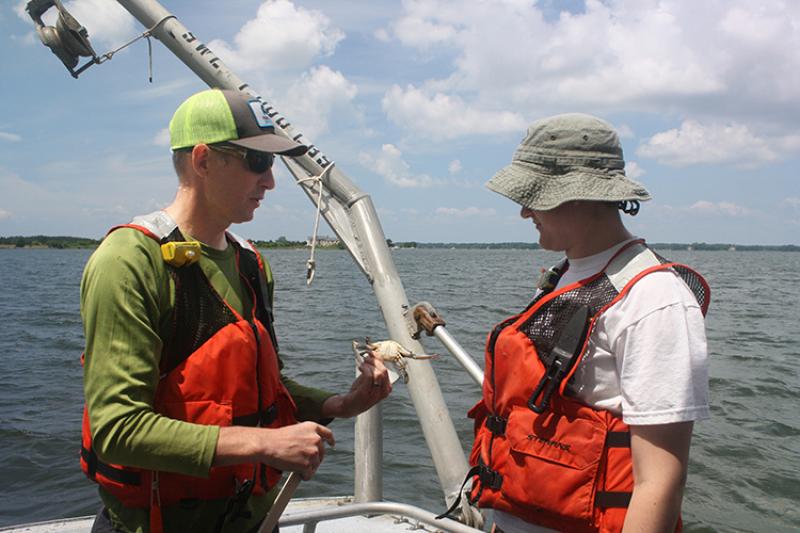Jay Lazar is a Physical Scientist and Field Program Coordinator with the NOAA Chesapeake Bay Office in the Office of Habitat Conservation in NOAA Fisheries. He has been with NOAA for 6 years and currently works in the NOAA Chesapeake Bay Office, Annapolis, Maryland.
Describe your role or a project related to habitat that you are currently working on at NOAA.
I support a multiagency effort to restore sustainable populations and ecologically valuable habitat for the native Eastern oyster in the Chesapeake Bay. Using multibeam echosounder bathymetry and backscatter data, my team locates the best places to restore habitat, and then monitors the habitat structure following restoration.
What habitat work has been especially inspiring to you?
Generally the large-scale oyster restoration effort in the Chesapeake Bay and specifically, the Choptank River Habitat Focus Area restoration effort is showing great promise. The documented system-wide responses to this effort have exceeded expectations.
Describe a time when you were surprised by fish and/or habitat.
The surprise thus far is the rate at which stone reefs are providing additional habitat value for a variety of colonizing and water filtering species, as well as habitat for resident finfish and biota.
What person has expanded your understanding or connection to habitat?
There are professors who sparked my interest in marine science, and a few friends who cultivated my love of nature, but I give my NOAA colleague, Steve Giordano, a lot of credit for creating a space at NOAA where I could apply my background in acoustic seafloor mapping to improve habitat outcomes within our work.

